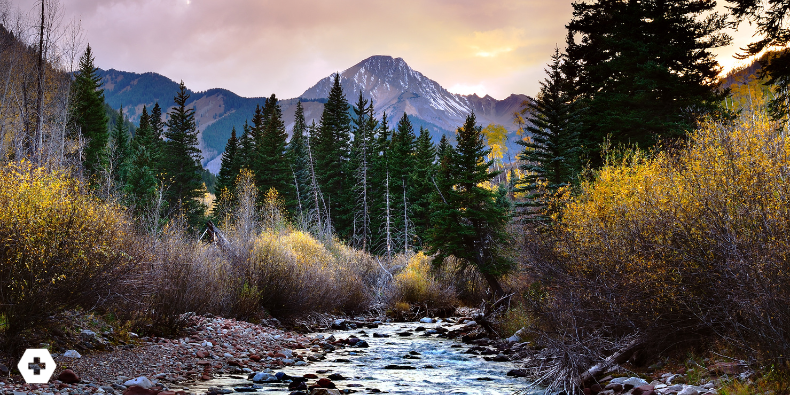
A Dive into Wilderness Medicine

Outdoor recreation has exploded in popularity over the last five years. Today, more than 55% of the U.S. population ages six and up participate in activities like hiking, biking, camping, and climbing. While that’s great news for our collective well-being, more people in the wild also means more people getting injured or sick in the wild. So, who helps when things go sideways far away from civilization? Enter the specialty of Wilderness Medicine.
What Is Wilderness Medicine, Exactly?
The current consensus definition used by the Wilderness Medical Society (WMS) is:
“Medical care delivered in those areas where fixed or transient geographic challenges reduce the availability of or alter requirements for medical or patient movement resources.”
In plain speak: It’s practicing medicine in places where resources are limited, and the terrain makes care and transport difficult. This can be somewhere remote like on a mountainside or out to sea but can also include somewhere seemingly less removed from civilization like a state park or the “back 40” of a farm where vehicle access is limited.
Unlike traditional settings, wilderness clinicians can’t rely on easy access to diagnostics or reinforcements. You’re dealing with cold, darkness, mud, and unpredictable conditions. And while transporting patients through hallways can be difficult, it pales in comparison to moving a patient through mountainous or icy terrain. Sorting out what is making your patient confused can be challenging in the hospital, but trying to figure that out in the wilderness presents a whole new set of problems.
Wilderness Medicine requires a knowledge of basic medical principles combined with the flexibility to adapt to your surroundings and the creativity to make do with what you have, which is often only what you’re carrying on your back.
Where to Start if You’re Curious
If this kind of medicine calls to you, there are plenty of ways to get started.
Many organizations offer education in wilderness medicine, with the original organization being the WMS, which was founded in 1983 by Drs. Paul Auerbach, Ed Geehr, and Ken Kizer. They offer higher level education, including:
- Fellowship in the Academy of Wilderness Medicine (FAWM)
- Diploma in Mountain Medicine (DiMM)
- Diploma in Diving and Marine Medicine (DiDMM).
They also have a listing of GME Fellowships in wilderness medicine.
For more entry-level educational, you can explore:
- ▪️Wilderness First Aid
- ▪️Wilderness First Responder
- ▪️Wilderness EMT
- ▪️Advanced Wilderness Life Support (AWLS)—medical background required
- ▪️Wilderness Upgrade for the Medical Professional (WUMP)—medical background required
Many different companies offer these more basic certification courses and a quick Google search will provide you with multiple options to get your training started. Perhaps the best part of these programs is that they are generally held in beautiful outdoor places so you get to enjoy the scenery of a rugged mountainscape or an ocean view while learning rather than the inside of a conference center.
Why It’s Worth It
If you are someone who enjoys the outdoors—whether it’s multi-daybackpacking trips or quick local hikes— having even basic wilderness medical training can be a game changer. You’ll not only feel more confident out there, but you’ll also be a safer, more reliable partner to the people you adventure with.
Practice-Changing Education
Experience education that goes beyond theory. Explore Hippo Education’s offerings below.

